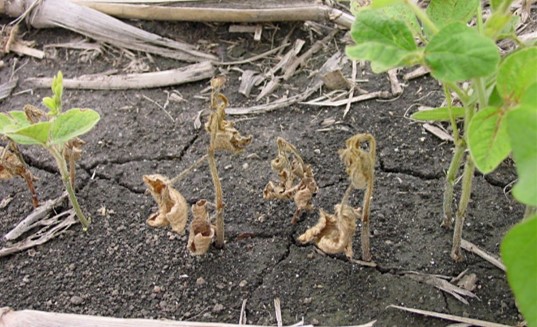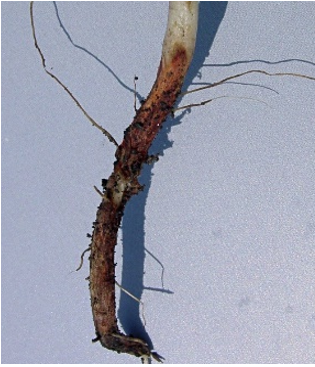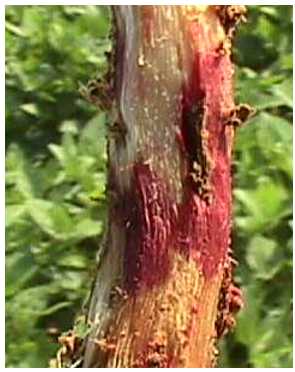Rhizoctonia Root and Stem Rot
Something went wrong. Please try again later...
My Account


Soybean plants showing symptoms of damping off due to rhizoctonia root rot disease. Rhizoctonia solani can cause seed rot, root rot, and reddish-brown lesions on hypocotyls at the soil line.
Seed Treatments - Offer some measure of protection and increase emergence.
Crop Rotation - Limited in its effectiveness as many strains of Rhizoctonia can infect corn, alfalfa, dry bean, and cereals.
Field Drainage and Soil Structure - Improve field drainage and remediate compaction and hardpan layers if possible.
Planting - Avoid planting under cool wet conditions.

Red discoloration at soil line due to Rhizoctonia solani.

Close up of red discoloration due to Rhizoctonia solani.